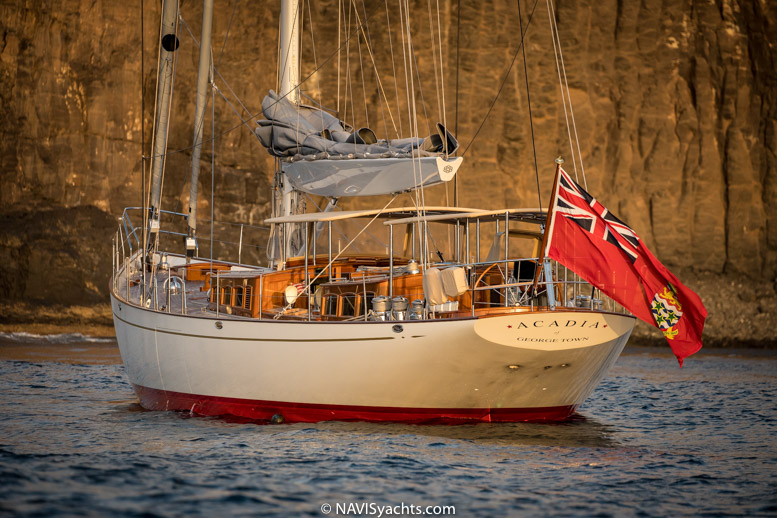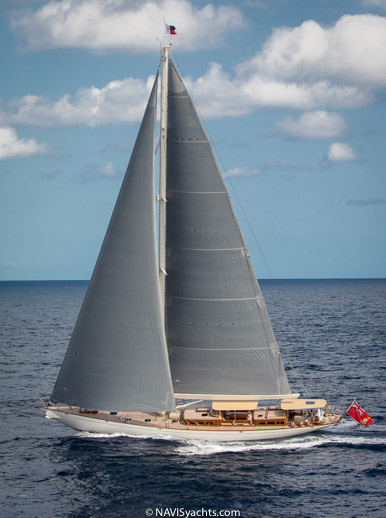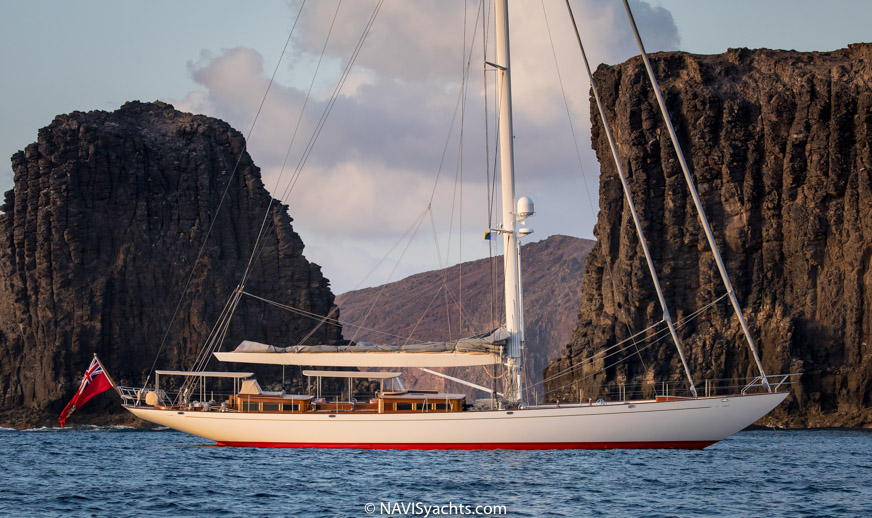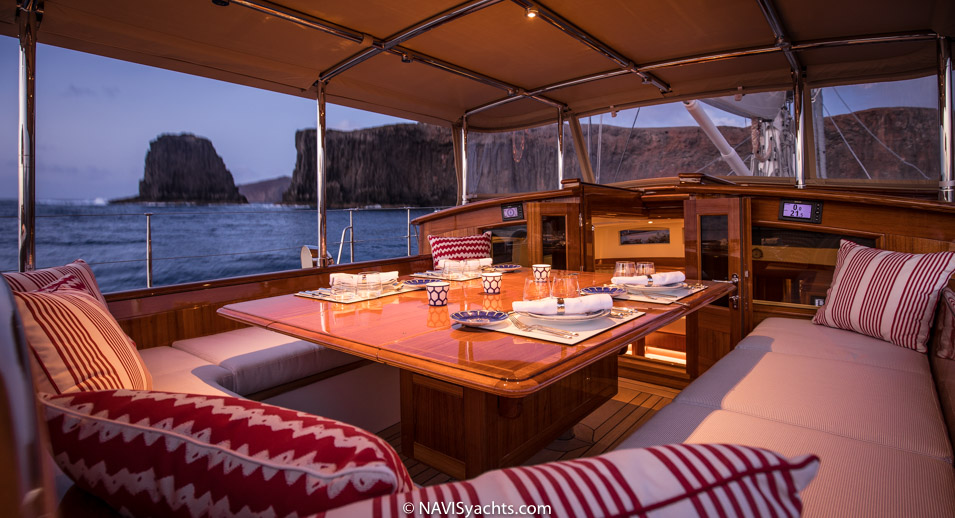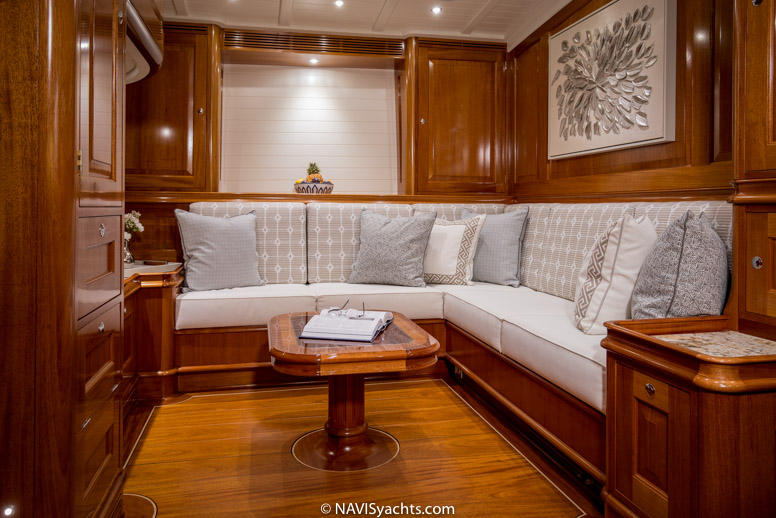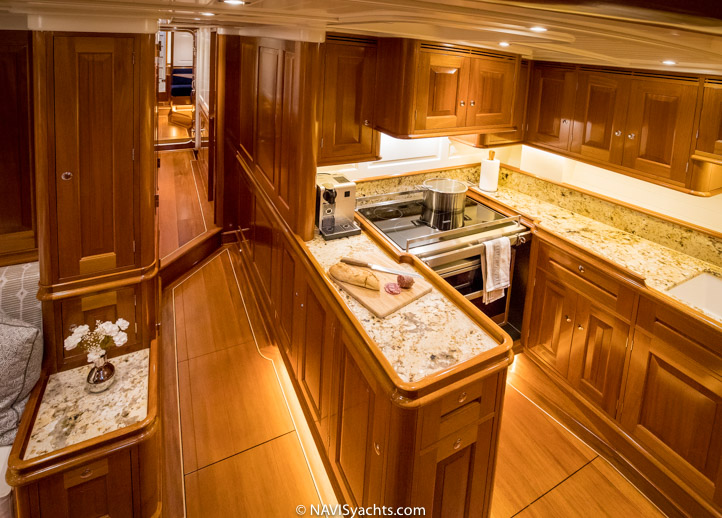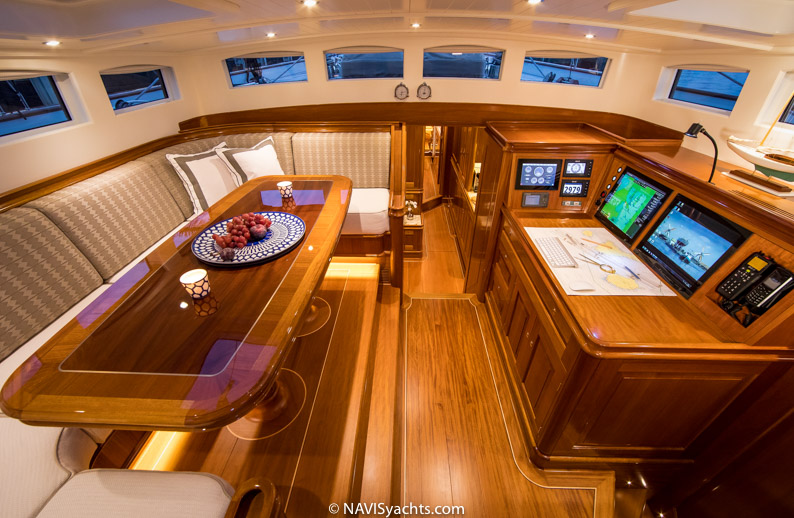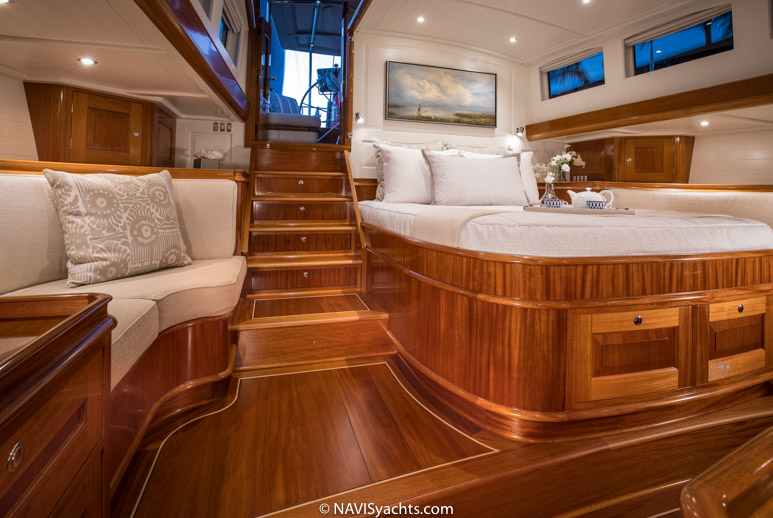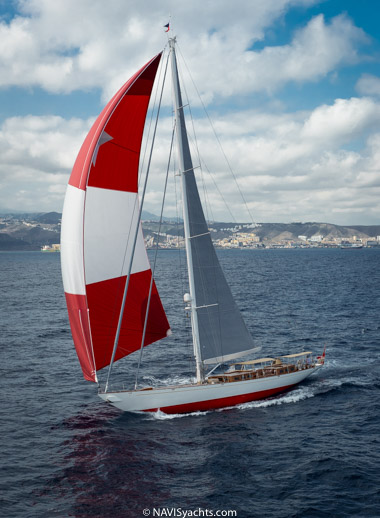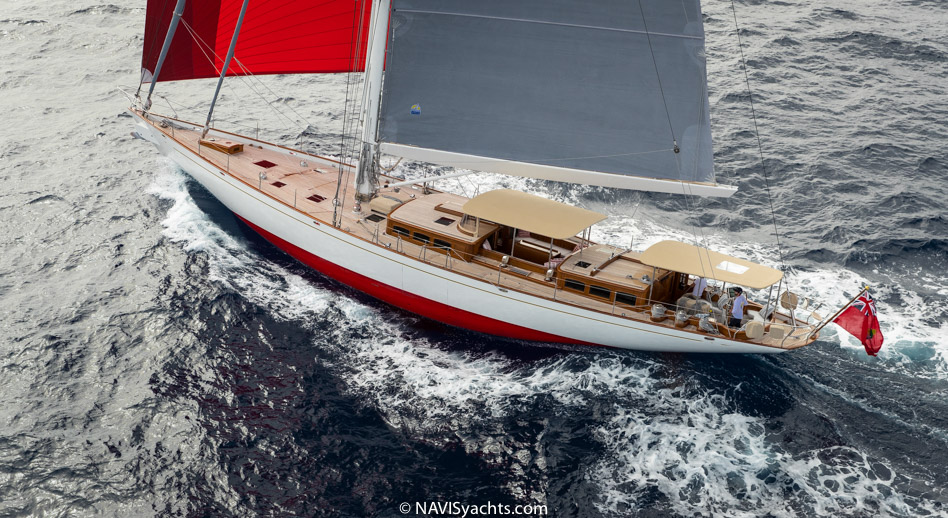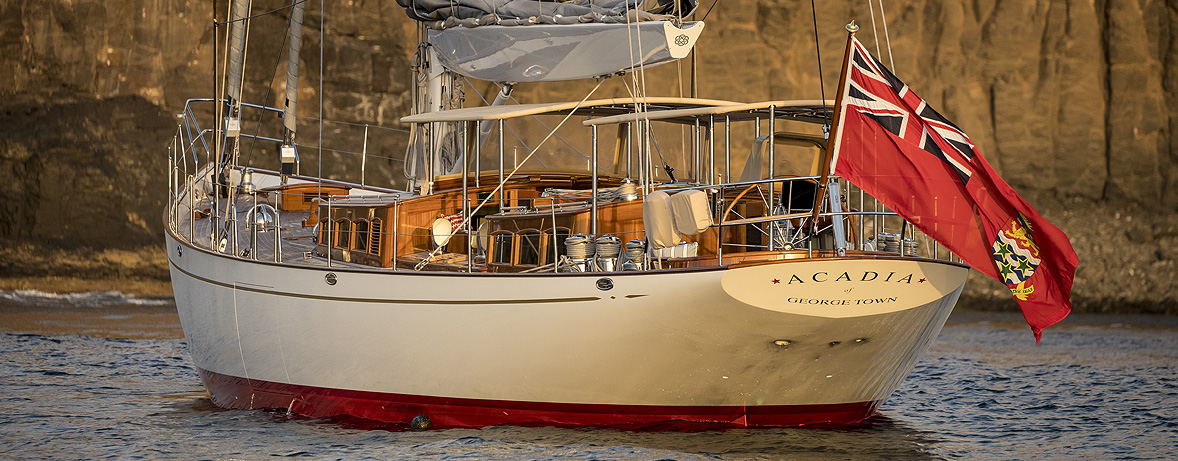Getting to Know Claasen’s “Truly Classic 90” Acadia
In a world that has witnessed an increased focus on electronics and universal automation, the art of crafting a fine boat for sailing is one that seems to be frequently overlooked. However, with a deliberate focus on combining the arts of the old with the technology of the 21st century, Claasen’s Acadia serves as a firm reminder that crafting a fine sailing yacht is something that can still be done in style.
As the third ship built in a series of “Truly Classic 90s”, the design team sought to create a masterpiece that could simultaneously perform well with both chartering and racing purposes. From the moment you set eyes upon her, you will recognize that every square inch of this ship has been masterfully crafted with a specific purpose in mind. Once you step below the deck, you will also witness the design team’s incredible ability to utilize space while also committing themselves to establishing a strong aesthetic appeal.
Excellence in Every Dimension
Based in the Netherlands, Claasen is a shipyard that has earned its stellar reputation from its ability to pay attention to the details that many other shipbuilders tend to overlook. The ship itself presents the summation of tens of thousands of specific choices. As you take a closer look at Acadia, seemingly nothing is out of place, in excess, or in short supply. Every decision was made deliberately and it seems that her grace could not have materialized in any other way.
The ship’s primary designer was Andre Hoek who is well-known and respected throughout the yachting community. Hoek drew inspiration from multiple different sources including his own experiences, the input of the yacht owner, as well as other successful works that have been completed by Claasen. With multiple sources of inspiration in mind, this yacht is one that has had a lot to live up to since the moment her construction began.
The dimensions of the ship were chosen with capacity, performance, and feasibility in mind. The length hull overall extends to 27.5 meters while the length on design waterline can be measured at 19.2 meters. The beam over all is an even 6 meters—ultimately, this makes for a ship that feels spacious but still offers the performance of one that was built for racing.
In an almost miraculous way, every dimension of the yacht is neither an inch too short nor an inch too long. Even upon a thorough inspection of the ship, her details “make sense” to experienced yachting enthusiasts, and it seems that Hoek Design Naval Architects, Holden & Dupuy Interiors, and Claasen Shipyards have clearly created a memorable masterpiece that they can be proud to put their names on.
Dedication to Performance
As stated, this ship was designed to be more than just a prestigious vessel capable of transporting people from port to port. It was also designed to be a champion, even when tested by rival yachts or the harshest weather conditions. From “stern to sail” the team sought to craft a ship that could easily adapt to the changing conditions of both the air and the sea while also offering state of the art performance features. Both the keel-stepped mast (measuring at 35.6 meters) and the boom (measuring at 11.40 meters) were locally built in the Netherlands and also altered to match the rest of the ship’s aesthetic theme. The design team focused heavily on the weight distribution of the ship’s various features and did an excellent job avoiding excess weight when possible.
In general, the outward appearance of the ship certainly contains several “classical” shipbuilding elements. However, in accordance with modern tastes and technology, the team was also able to appropriately focus on some newer features as well. Things such as the lighting scheme, the layout of the dual cockpits, and a focus on energy efficiency combine to help equip Acadia for the modern era.
Though the movement of the ship is obviously largely designed around the sails, the team still made no compromises when it came to making choices related to the engine, batteries, and other internal systems. The engine type is a John Deere 6068 SFM85 that is capable of yielding a full-load power of 209kw at 2200 rpm. The propeller installation and the bowthruster were both carefully crafted by Hundested.
The battery types that can be found throughout the ship include lithium-ion, lynx-ion, and a gel type that help make the ship’s overall performance more adaptable to specific situations. The amount of work that went into the overall design process is truly admirable. Once you are blessed with the privilege of witnessing Acadia gracefully move across open water, you will realize that these efforts were undeniably worth it.
